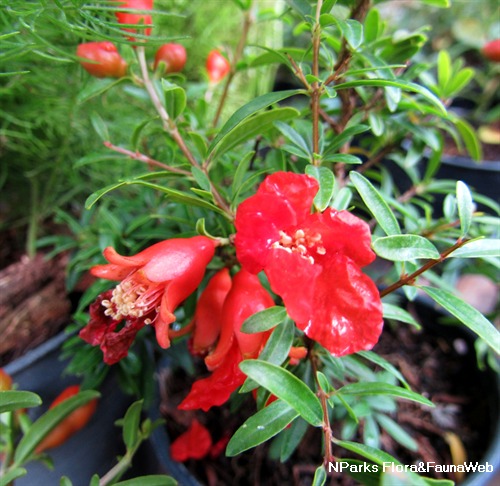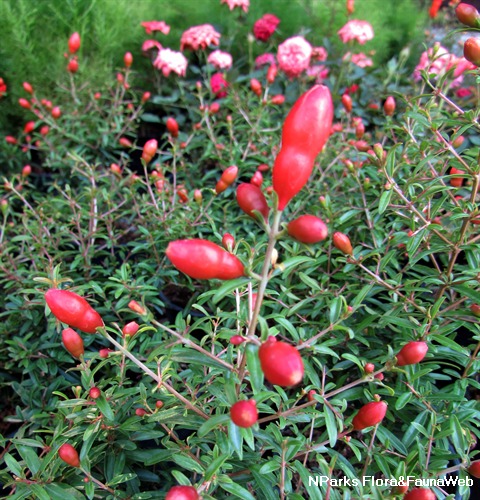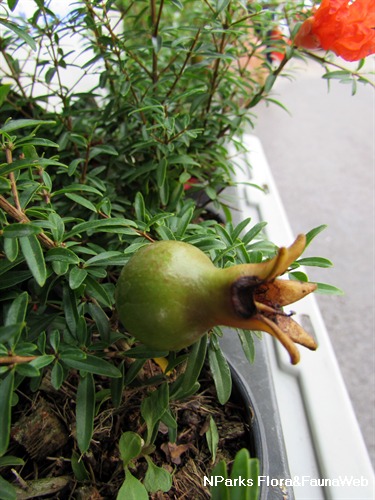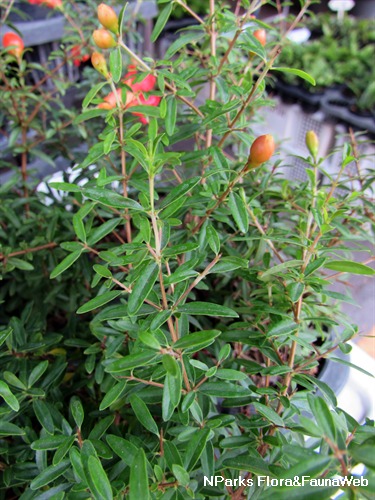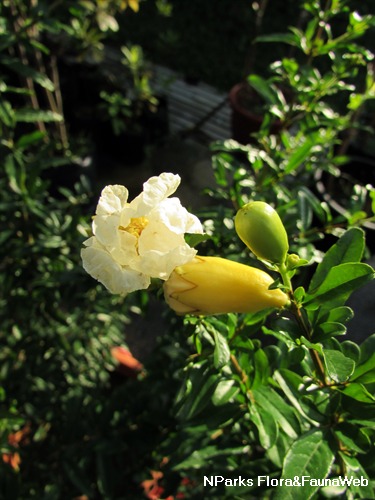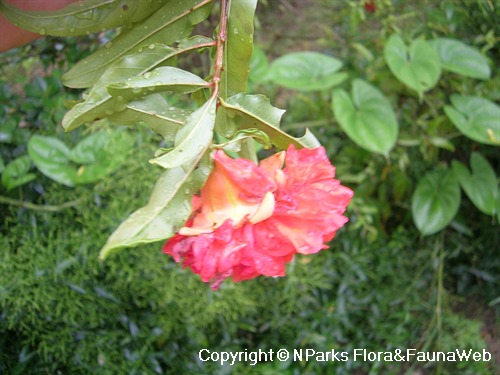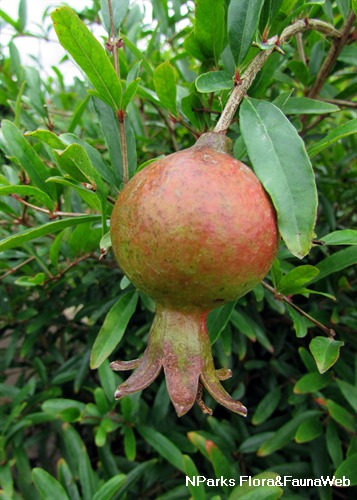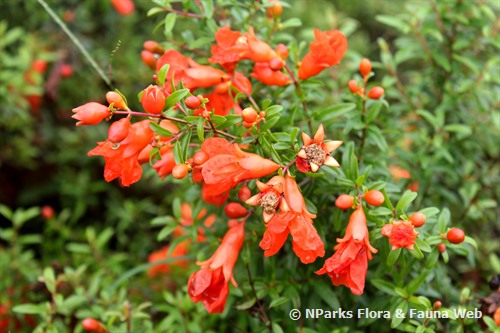
Name
Classifications and Characteristics
| Plant Division | Angiosperms (Flowering Seed Plants) |
|---|---|
| Plant Growth Form | Shrub |
| Lifespan (in Singapore) | Perennial |
| Mode of Nutrition | Autotrophic |
Biogeography
| Native Habitat | Terrestrial |
|---|---|
| Preferred Climate Zone | Tropical |
| Local Conservation Status | Non-native (Horticultural / Cultivated Only) |
Description and Ethnobotany
| Growth Form | Bushy, compact small-sized shrub, able to grow up to about 1 m tall and 1 m wide. |
|---|---|
| Foliage | Leaves are narrowly oblong and have a glossy surface. |
| Flowers | Bright, orange-red flowers measuring about 3 - 4 cm wide. |
| Fruit | Spherical, greenish-brown fruits |
| Etymology | Genus Punica refers to Phoenicia in the Asia minor region. Species granatum refers to the pale-scarlet colour of the pomegranate. |
| Ethnobotanical Uses | Edible Plant Parts : Edible Fruits |
Landscaping Features
| Desirable Plant Features | Ornamental Flowers, Ornamental Fruits |
|---|---|
| Landscape Uses | Parks & Gardens, Small Gardens, Container Planting |
Plant Care and Propagation
| Light Preference | Full Sun, Semi-Shade |
|---|---|
| Water Preference | Moderate Water, Little Water |
| Rootzone Tolerance | Drought Tolerant, Moist Soils, Well-Drained Soils, Easy to Grow |
| Propagation Method | Stem Cutting |
Foliar
| Foliage Retention | Deciduous |
|---|---|
| Mature Foliage Colour(s) | Green |
| Foliar Type | Simple / Unifoliate |
Floral (Angiosperm)
| Flower Colour(s) | Red, Orange |
|---|
Fruit, Seed and Spore
| Mature Fruit Colour(s) | Brown |
|---|
Image Repository
Others
| Master ID | 32368 |
|---|---|
| Species ID | 6779 |
| Flora Disclaimer | The information in this website has been compiled from reliable sources, such as reference works on medicinal plants. It is not a substitute for medical advice or treatment and NParks does not purport to provide any medical advice. Readers should always consult his/her physician before using or consuming a plant for medicinal purposes. |


